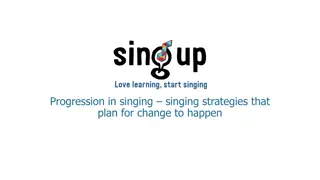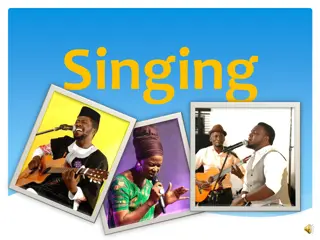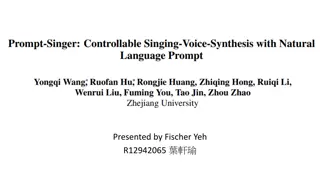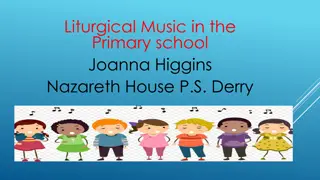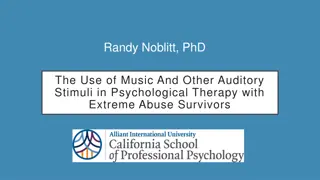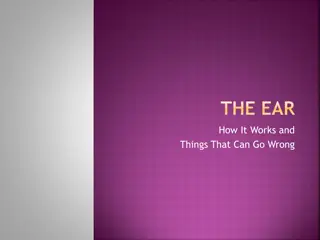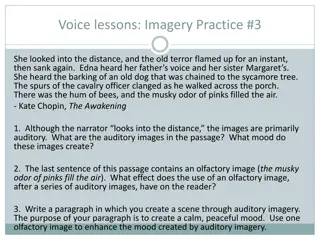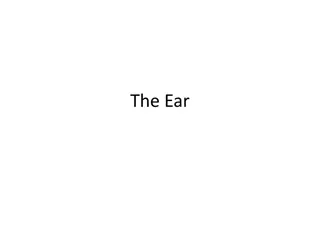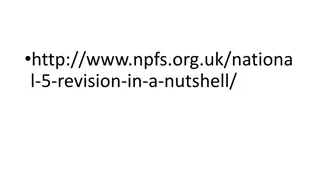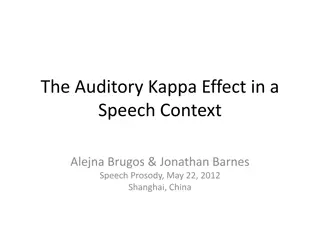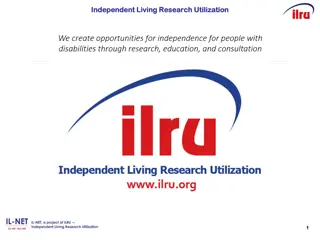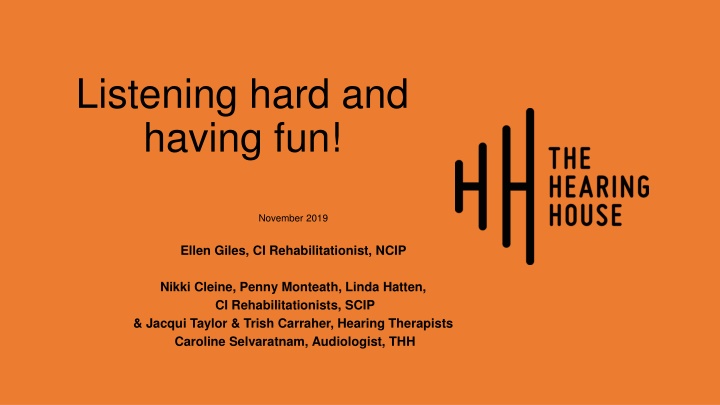
Enhancing Communication Through Singing and Auditory Training
This content discusses the benefits of singing and auditory training for individuals with hearing impairments, particularly children with cochlear implants. It explores how singing can improve speech perception in noisy environments and the importance of customized auditory training to unlock one's hearing potential. The principles of auditory training are outlined along with practical strategies for effective rehabilitation. Discover how music and auditory exercises can enhance mental alertness, creativity, and overall well-being.
Download Presentation

Please find below an Image/Link to download the presentation.
The content on the website is provided AS IS for your information and personal use only. It may not be sold, licensed, or shared on other websites without obtaining consent from the author. If you encounter any issues during the download, it is possible that the publisher has removed the file from their server.
You are allowed to download the files provided on this website for personal or commercial use, subject to the condition that they are used lawfully. All files are the property of their respective owners.
The content on the website is provided AS IS for your information and personal use only. It may not be sold, licensed, or shared on other websites without obtaining consent from the author.
E N D
Presentation Transcript
Listening hard and having fun! November 2019 Ellen Giles, CI Rehabilitationist, NCIP Nikki Cleine, Penny Monteath, Linda Hatten, CI Rehabilitationists, SCIP & Jacqui Taylor & Trish Carraher, Hearing Therapists Caroline Selvaratnam, Audiologist, THH
Whats planned for today? Welcome with a song (waiata) Intro & why bother? Training ideas & giving feedback Mini workshops Close with song
E Toru Nga Mea https://www.youtube.com/watch?v=HdNbBgG oRvs
Singing and speech understanding Singing Reduces stress & increases mental alertness Singing connects our neurotransmitters in a different way. Singing fires up the right temporal lobe of our brain, releasing endorphins that make us smarter, healthier, happier and more creative https://www.hearingtracker.com/blo g/hearing-music-and-brain-health/
The benefits of singing with a CI Research finding with children (2018): The CI singing group showed better speech-in-noise perception than the CI non- singing group. results suggest that singing and musical instrument playing may have a potential to enhance the perception of speech in noise in children with CIs. Developmental Links Between Speech Perception in Noise, Singing, and Cortical Processing of Music in Children with Cochlear Implants Ritva Torppa, et al. 2018. Univ of Helsinki. Music Perception: An Interdisciplinary Journal, Vol. 36 No. 2, December 2018; (pp. 156- 174) DOI: 10.1525/mp.2018.36.2.156
Auditory training why bother? Aim: to enable recipient to reach their hearing potential Focus on hearing goals has auditory training changed over the years? Is it working? (ref. otology and neurology (2018) Moberly et al.) How do we customise?
Auditory training how we do it ! Intensive rehab for first 3 months Hearing goals Keeping it fun & relevant Teaching the partner Internet options Music Wireless accessories / streaming
Principles of Auditory training (Carhart 1961) Detection Discrimination Identification Recognition Comprehension Basis for developing an auditory training programme
Auditory training how we do it Presentation: Aim for auditory alone (AA) with CI ear only use clear speech May need to emphasise a difficult word Drill items (read them in order) Then present at random Giving feedback Keep feedback positive ( helper to avoid saying no! ) Give chance to hear it again & compare word with substitute
Ways to vary the difficulty of the training task To make harder To make easier Closed Open Stimulus set Words Stimulus Unit Complex sentences Similar Dissimilar Stimulus Similarity Low High Context Structured Task Spontaneous Poor Good Signal to noise ratio
Workshop stations Choose a workshop that interests you Seeds/ growing plants (veg/ flowers) & where are the carrots? Cake in a mug (video) & favourite recipe/Menu items at a caf ( practice in BGN) Make a cocktail ( mocktail) & plan a beer trail/ wine trail/ caf trail. Trivia quizz game & Hang man/ cards for pontoon family photos & Family tree task
Te Aroha https://www.youtube.com/watch?time_continu e=38&v=uefJdSCkzPo
Hierarchy of skills development in speech perception Building receptive skills -detection, e.g. easy: oo, a h, ee -discrimination, e.g. easy: cat vs caterpillar hard: someday vs sunday - identification, e.g. easy: months of year hard: days of the week hard: s, f, th (LING sounds)
Hierarchy of skills development in speech perception Building receptive-interactive skills -recognition, direct clue blue : He s wearing a blue shirt indirect clue clothes : It that a new shirt? -comprehension, e.g. using CDT/ Pair wk different speakers, background noise repair strategies required for communication breakdowns telephone work in a cafe
Analytic (word) & Synthetic (sentence) Training Syllable no. Intonation Suprasegmental Word stress Analytic Sentence stress Segmental Consonants Vowels Topic related Sentences Synthetic Everyday Connected discourse Connected discourse tracking Paragraph tracking


